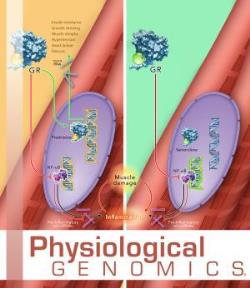Investigational steroid mirrors prednisone's benefits while taming its side effects
Children's-led research also reveals nine potential biomarkers for inflammatory diseases

WASHINGTON–A head-to-head trial comparing the decades-old steroid, prednisone, and a promising new steroid, vamorolone, finds both act on the same key set of genetic pathways involved in controlling inflammation, indicates a new study led by Children’s National Health System researchers. However, the study suggests the new investigational steroid doesn’t activate several additional pathways involved in prednisone’s bevy of undesirable side effects.
The findings reveal a molecular mechanism behind vamorolone’s encouraging results in experimental models and human volunteers and eventually could lead to even better therapies for health problems that steroids are designed to treat.
“Our goal is to eventually have a new and improved steroid that replicates the efficacy of prednisone without its side effects,” says Christopher R. Heier, Ph.D., an assistant professor at Children’s Research Institute and senior study author. “Our results show that with vamorolone, we could be closing in on that goal.”
Prednisone long has been prescribed short-term for conditions that involve inflammation, such as allergic reactions, psoriasis, asthma and bronchitis. However, for chronic conditions, such as Duchenne muscular dystrophy, prednisone is often prescribed for years or even decades, explains study lead author Alyson A. Fiorillo, Ph.D., also an assistant professor at Children’s Research Institute.
Over time, several serious side effects typically arise after prednisone use, including stunted growth, bone fragility and weight gain. But better alternatives don’t yet exist to help patients with Duchenne retain their strength and motor abilities.
Vamorolone, which was developed at Children’s National, has the potential to be a game-changer for patients who need to use prednisone long-term, say Fiorillo and Heier. Although preclinical models and now human trials have suggested that vamorolone could offer the same benefits as prednisone without the burden of its side effects, the mechanism behind these effects was unknown.
To investigate, the researchers analyzed muscle from a “pediatric” Duchenne Muscular Dystrophy experimental models that had been treated with either prednisone or vamorolone for six weeks to look at patterns of microRNA (miRNA) expression, a way that the cells fine-tune genetic activity.
The researchers analyzed all the different types of miRNA present in these samples, comparing them with healthy muscle and Duchenne Muscular Dystrophy model muscle that hadn’t received either drug.
Their results, highlighted on the cover of the September 2018 special issue of Physiological Genomics, turned up 136 miRNAs that differed between experimental models carrying the mutation and those that didn’t. Treatment with prednisone caused a significant change in 76 miRNAs. In contrast, vamorolone only affected about half as many miRNAs.
Narrowing their focus, they found that nine of these miRNAs were associated with both the disease and a healthy response to treatment, returning to healthy levels when the experimental models were dosed with either steroid. A further look showed that each key miRNA is associated with inflammation and has been implicated in other types of inflammatory diseases, such as inflammatory bowel disease and myositis.
However, when they looked at the miRNAs that were specifically activated by prednisone and not vamorolone, each was associated with genetic pathways linked to prednisone’s side effects, including insulin resistance, fibrosis, increased risk of heart failure, stress and hypertension.
The researchers replicated these findings by analyzing muscles from a different study during which ”adult” Duchenne Muscular Dystrophy experimental models were administered either drug for months, rather than weeks, further validating the results.
Together, the researchers say, these findings suggest that while either steroid effectively reduces inflammation, vamorolone can accomplish this feat without activating the pathways that cause prednisone’s side effects.
The results also identify a core set of miRNAs that could act as biomarkers for inflammatory disease, says Fiorillo. “They’re a fingerprint for chronic inflammation,” she says.
Eventually, she adds, researchers could develop a blood test that identifies abnormal activity of these miRNAs, potentially sparing patients from other types of painful or expensive diagnostic tests. These miRNAs also could serve as potential targets for new drugs that directly modify their activity, leading to new therapeutics for inflammatory diseases.
In addition to Fiorillo and Heier, study co-authors include Christopher B. Tully, Children’s Center for Genetic Medicine Research; and Jesse M. Damsker, Kanneboyina Nagaraju and Eric P. Hoffman, all of ReveraGen BioPharma.
Research reported in this news release was supported by the Clark Charitable Foundation; the Department of Defense under award No. W81XWH-17-1-047; the Foundation to Eradicate Duchenne; and the National Institutes of Health under award numbers 1L40-AR-070539-01, R00-HL-130035, U54-HD-090254 and L40-AR-068727.
Media contact: Diedtra Henderson | 443-610-9826 | 202-476-4500






